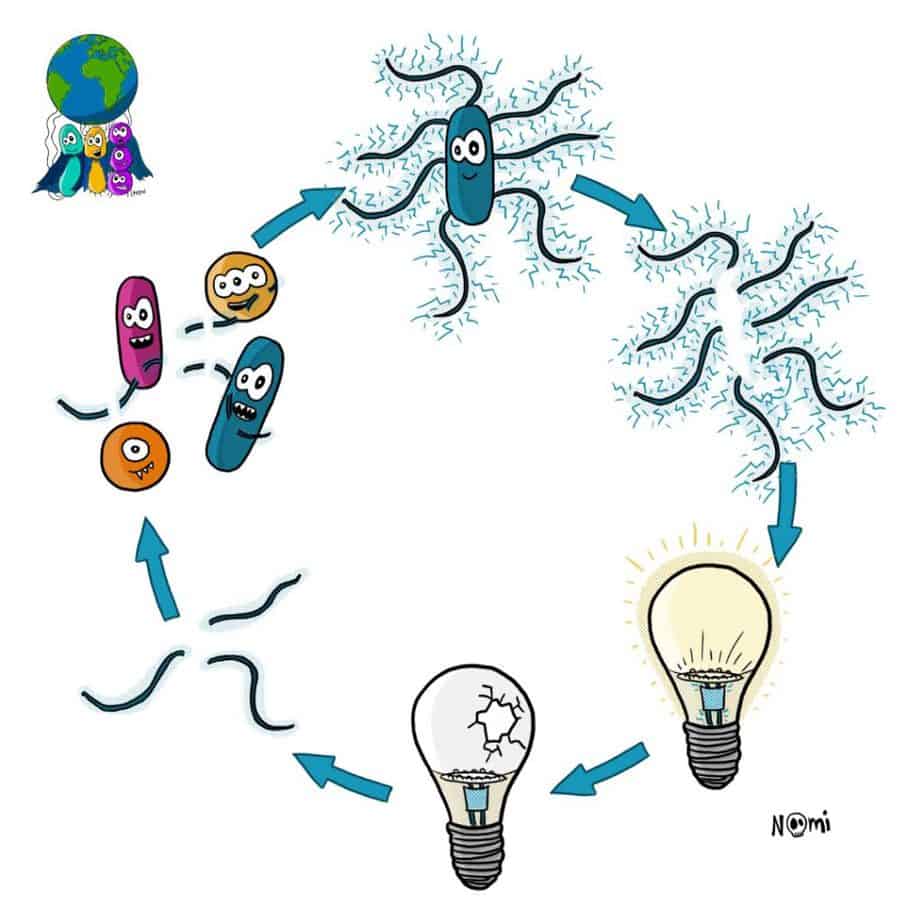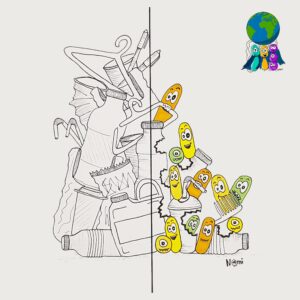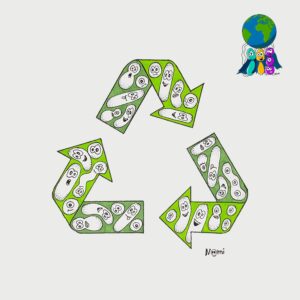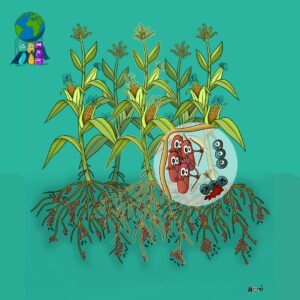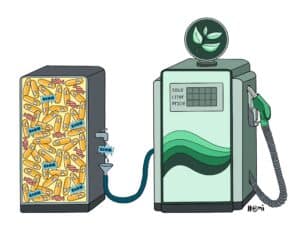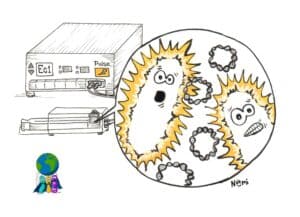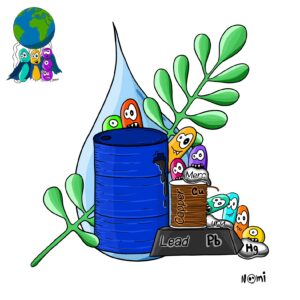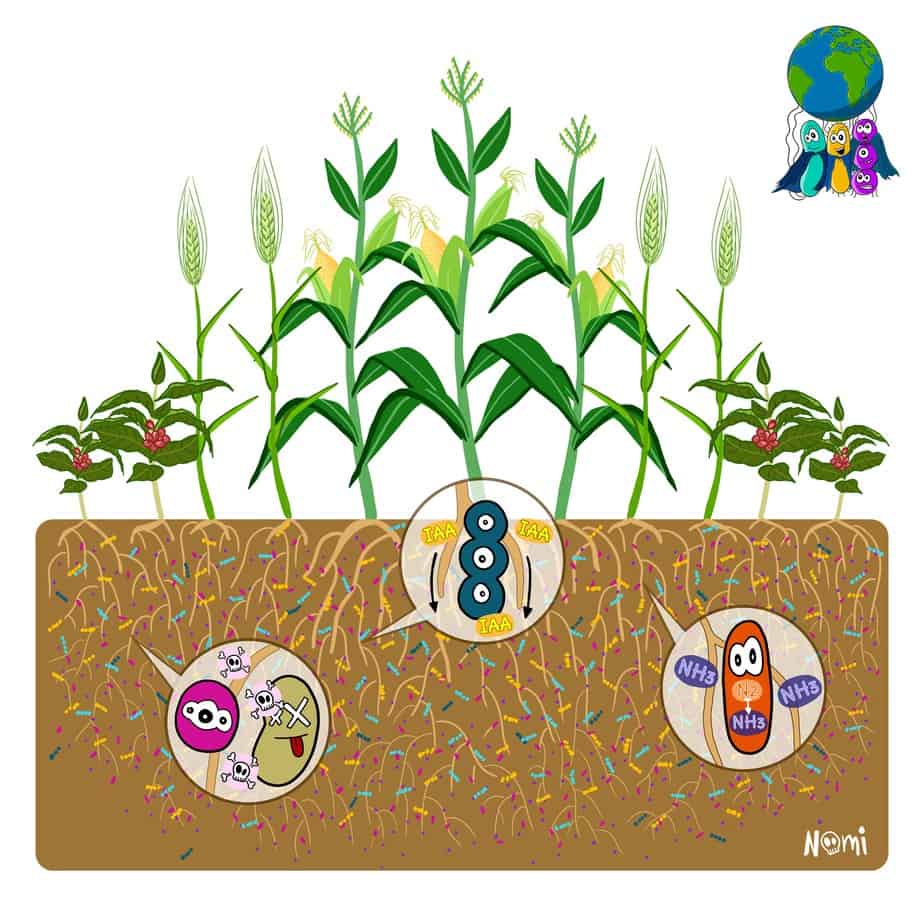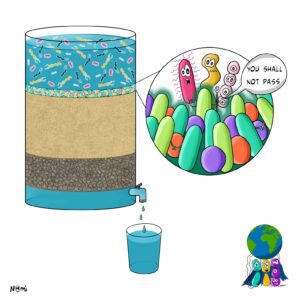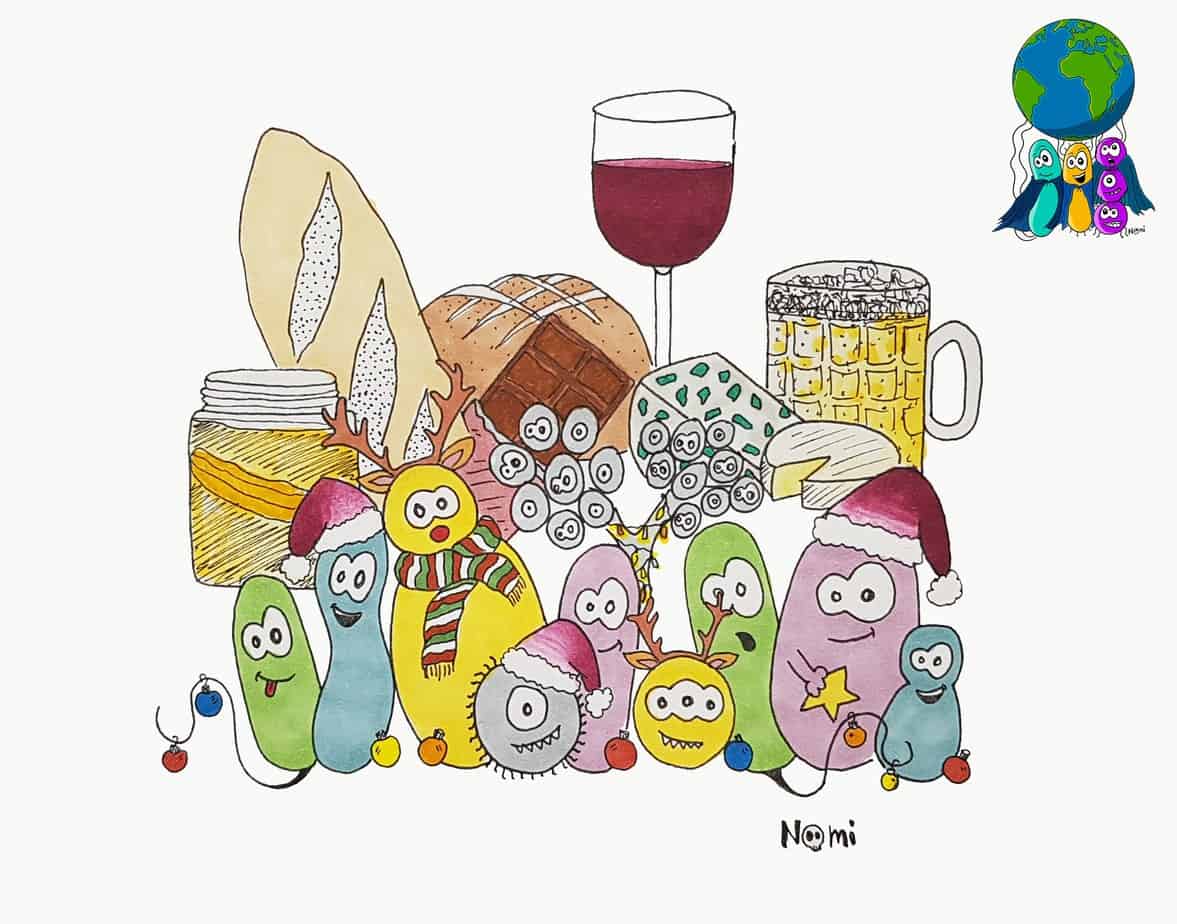We live in a wired world.
Everything is connected and our lives depend more and more on technology and electrical devices.
All electronic materials that we use, are produced with lots of energy, harsh processing and/or toxic chemicals. Many electronic devices and batteries are considered disposable. But these are not recyclable or biodegradable and they are often filled with toxic materials.
So, just as plastic waste is an environmental burden, all electronic waste is becoming an increasing problem for both the environment and our health.
But also for this problem, bacteria provide a green and sustainable solution: Microbial nanowires.
What are microbial nanowires?
Some bacteria can produce protein structures that work like electric cables. Researchers don’t fully understand the details yet. But somehow bacteria use these protein structures to send and receive electrons. Hence, they produce electricity.
And microbial nanowires don’t just substitute synthetic electric cables, they are also lasting. Bacteria-produced nanowires can withstand temperatures up to 100 °C, extreme pH conditions and protein-destroying chemicals.
And they are green!
Most electronic components that we synthesise, consist of some sort of metal to conduct electricity. Yet, microbial nanowires do not contain such toxic metals and are thus considered harmless to the environment.
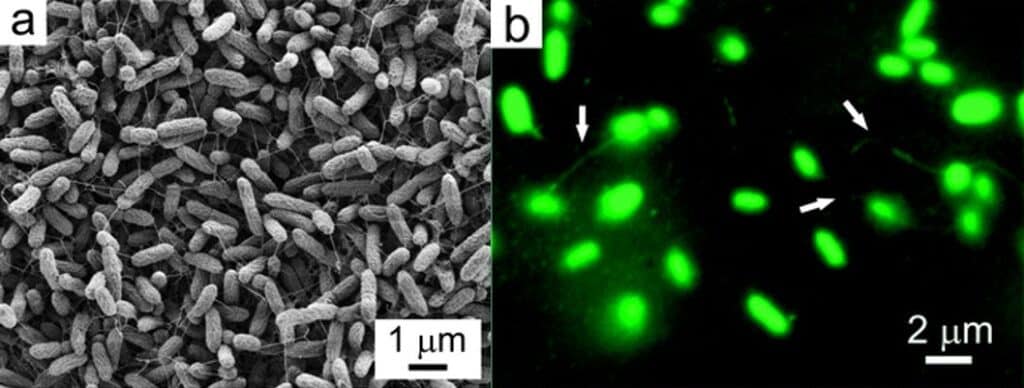
Which microbes produce green nanowires?
Many bacteria form cable-like structures that they send out of the cell. Researchers call these structures pili and they have different functions. For example, bacteria can use them to send or receive genetic material.
The bacterium Geobacter sulfurreducens produces this such a type of pilus, but with one difference: Its pilus can conduct electricity. This is why researchers call it an e-pili.
Other bacteria, like Shewanella oneidensis, produce nanowires that they produce from outer membrane vesicles. Outer membrane vesicles are blebs from the membrane of a bacterium. And in the membrane of the vesicles are electron transporters through which electrons hop. The vesicles then extend and eventually become a nanowire with the ability to conduct electricity.
Researchers even found archaea that produce so-called e-archaella. These work similarly to e-pili and help archaea to exchange electrons with their environment.
Why do bacteria produce microbial nanowires?
Researchers don’t fully understand why bacteria use nanowires to conduct electricity. But they are convinced that bacteria produce nanowires for food.
When bacteria produce the nanowires, they immediately transport them outside of the cell. They stay connected with the cable while the cable reaches out to new nutrient sources.
For example, bacteria can connect their nanowires with solid metal oxide particles. By transferring electrons to the metal oxides, they become soluble and the bacteria can use the metal for their metabolism. Like this, microbial nanowires function as arms for bacteria. They try to reach metals that are otherwise too far away from the bacterium.
Also, bacteria produce these nanowires in biofilms or cell aggregates. This looks as if bacteria form electrical networks to exchange electrons. However, it is not clear yet to researchers what the advantage of such a microbial electrical network is.
How can we use microbial nanowires?
Yes, electronics are meant to help us bring our thoughts and ideas to life in creative ways. So, maybe it is about time to use life for electronics as well. This is how e-biologics were born.
Researchers learned under which conditions bacteria produce a lot of e-pili. They then cut them off the bacteria, dry them and fix them. These green microbial nanowires have even higher conductivities than when connected to bacteria.
Therefore, microbial nanowires can be sustainable solutions to our increasing electronic waste problem.
And what about degradation?
As often, when Nature knows how to produce something, it also knows how to destroy it. So, you could throw out your broken bacteria-produced electronic component onto the compost pile. And the bacteria would take care of them and degrade them.
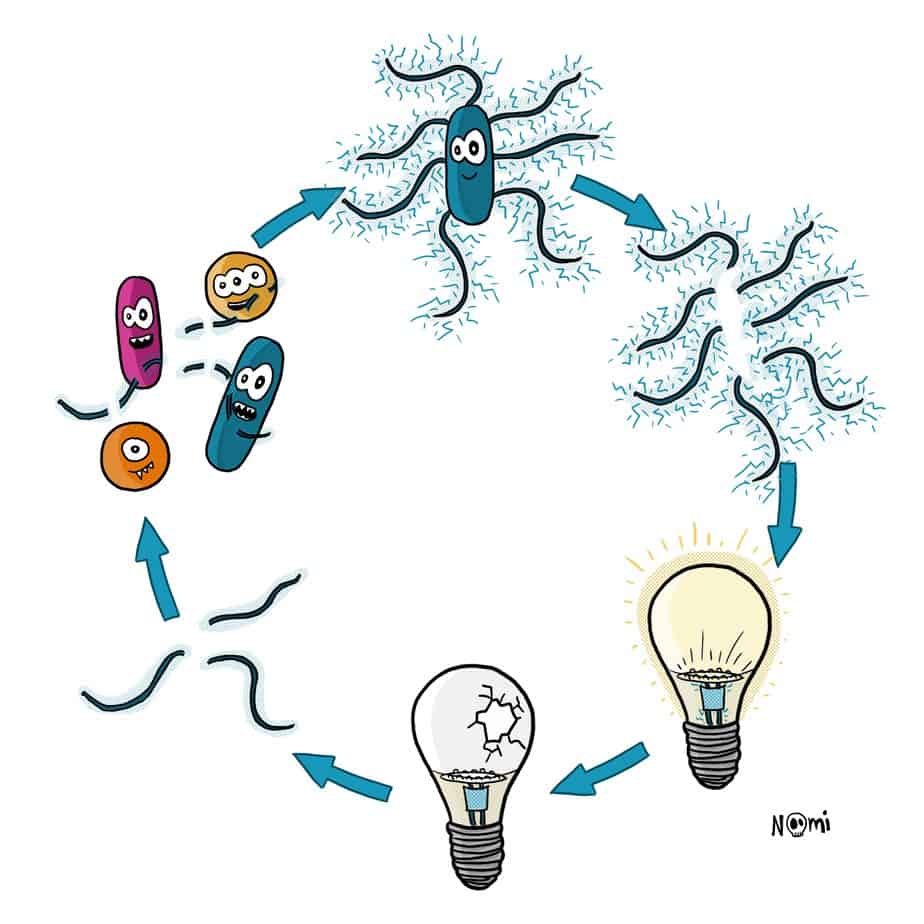
Microbial nanowires are very robust and conduct electricity. Hence, they could be conducting components in electronic devices such as biosensors, light-emitting diodes and organic solar cells.
Researchers are also trying to increase the conductivity of microbial nanowires. For example, the bacterium Geobacter metallireducens produces a nanowire that conducts electricity 5,000 times better than the one from Geobacter sulfurreducens. By understanding the differences between these two structures, researchers can create nanowires with even higher conductivity.
Bacteria powered devices
We know that cable bacteria can conduct electricity over distances up to 7 cm Yet, microbial nanowires are even more remarkable. Usually, proteins are bad electron conductors. But again, bacteria created masterpieces by developing protein structures that are great electron conductors.
Now it is up to researchers learning to handle e-pili to produce e-cables that one day we might use in our electrical devices.
And who knows maybe one day, we will have self-powering devices that contain bacterial biofilms producing their own electricity.

